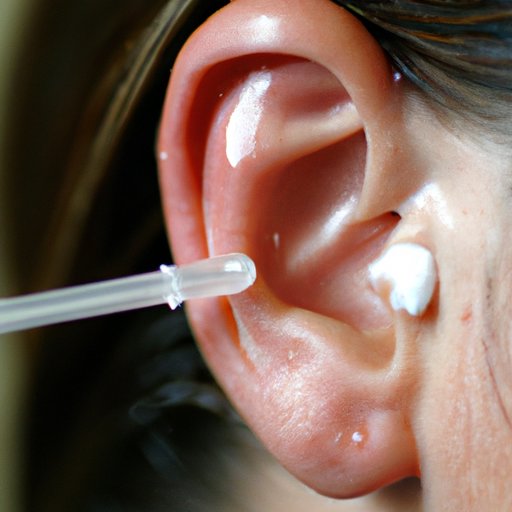
Introduction
Imagine taking a refreshing swim on a hot summer day, but then suddenly, you feel that sensation that nobody likes- water in your ear. When water becomes trapped in your ear canal, it can cause discomfort and even lead to an infection if left untreated. In this guide, we will explore natural remedies, over-the-counter ear drops, and safe methods for cotton swabs to get water out of your ear.
Natural Remedies
If you have water in your ear, your first instinct might be to tilt your head and vigorously shake it out. However, shaking can often make it worse by pushing the water further into the ear. A more effective method is to tilt the ear towards the ground while gently pulling the earlobe downwards. The gravity will help the water to drain out. Another natural remedy is to use a hairdryer on the lowest setting, aimed at the ear canal. The warm air will evaporate the water. Just be sure to hold the dryer at least one foot away from your ear and to avoid using high heat to prevent burns.
It’s important to note that natural remedies may not always work for everyone. However, there are general tips that can improve the effectiveness of these methods. It’s recommended to use earplugs or a swim cap to prevent water from entering the ear in the first place. If water does get in your ear, do not put anything inside the ear canal, including fingers or cotton swabs. This can push the water further in and cause damage to the ear.
Over-the-Counter Ear Drops
If natural remedies are not effective, over-the-counter ear drops can provide relief. These ear drops contain ingredients that break up the water in the ear canal, making it easier to drain out. Before using ear drops, it’s important to read the instructions carefully and warm the solution to body temperature by placing it in your hand before application.
To use ear drops, lie down on your side with the affected ear facing upwards. Next, gently pull the earlobe upwards and outwards to straighten the ear canal. Place the recommended number of drops into the ear canal and remain in this position for 5-10 minutes to allow the drops to work. Afterward, tilt your head to the opposite side and let the drops and water drain out. Recommended over-the-counter ear drops include Swim-Ear Ear Water Removal Drops and Mack’s Wax Away Earwax Removal System.
Safe Methods for Cotton Swabs
It’s important to note that using cotton swabs to remove water from your ear can cause more harm than good if done incorrectly. Jamming a cotton swab too far into your ear canal can cause damage and push the water further in. However, if you use caution, cotton swabs can provide relief. Simply use a cotton swab to gently swipe the outer part of your ear. This can encourage the water to move outwards and drain.
Prevention
Preventing water from entering the ear in the first place is the best course of action. Wearing earplugs or a swim cap when swimming or engaging in water sports can help reduce the risk. For those who frequently encounter water in their ear, such as swimmers or people with a history of ear infections, it’s recommended to visit a doctor for a personalized prevention plan.
Knowing When to See a Doctor
While discomfort and temporary hearing loss are common with water in the ear, complications can arise if left untreated. Symptoms such as pain, dizziness, fever, and discharge might indicate a more severe issue. In these cases, it’s essential to seek medical attention. Ignoring the issue can lead to hearing damage or even permanent hearing loss.
Conclusion
Water in the ear is a common issue that affects many people. Knowing how to remove water from your ear using natural remedies, over-the-counter ear drops, and even cotton swabs can bring relief quickly and safely. Taking preventative measures can reduce the likelihood of water entering the ear, while seeking medical attention when necessary is crucial for your overall ear health.





